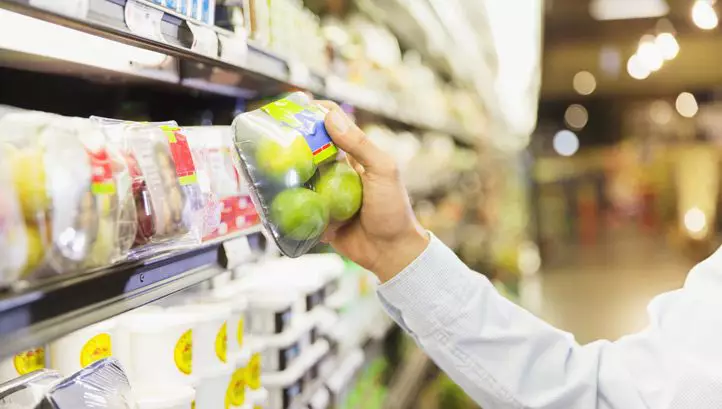In today’s world, the concept of sustainable shopping is gaining significant traction. As more people become aware of environmental issues, the demand for eco – friendly products is on the rise. This trend is not only shaping the way consumers shop but also influencing the strategies of businesses across various industries.

I. The Shift towards Sustainable Shopping
A. Growing Environmental Awareness
- Understanding the Impact of Consumption
Consumers are now more educated about the environmental impact of their purchases. They realize that the products they buy, from clothing to electronics, can have a significant effect on the planet. For example, the fast fashion industry is known for its high water usage and pollution. As a result, consumers are starting to question the sustainability of the clothes they wear and are looking for more eco – friendly alternatives. - The Role of Media and Social Movements
Media coverage and social movements have played a crucial role in raising awareness. Documentaries about climate change and environmental degradation, as well as social media campaigns, have inspired people to take action. For instance, campaigns like “Plastic Free July” have encouraged millions of people around the world to reduce their plastic consumption.
B. Changing Consumer Values
- Preference for Ethical and Sustainable Brands
Today’s consumers are placing a higher value on ethics and sustainability. They are more likely to support brands that are transparent about their environmental practices. For example, a beauty brand that uses natural ingredients and has a zero – waste packaging policy is likely to attract more customers than a brand with a less sustainable approach. - Long – Term Thinking
Consumers are also thinking more about the long – term consequences of their actions. They are willing to pay a little more for products that are durable and have a lower environmental impact over their lifespan. For instance, instead of buying cheap, disposable items, they are opting for high – quality, reusable products that will last longer.
II. The Types of Eco – Friendly Products in Demand
A. Sustainable Fashion
- Organic and Recycled Materials
The demand for sustainable fashion is growing rapidly. Consumers are looking for clothing made from organic cotton, linen, and recycled materials. These materials are not only better for the environment but also often more comfortable to wear. For example, many brands now offer jeans made from recycled denim, reducing the need for new raw materials. - Ethical Manufacturing Practices
In addition to the materials, consumers are also concerned about how the clothes are made. They want to support brands that ensure fair wages and good working conditions for their employees. Brands that are certified by organizations like Fair Trade are becoming more popular in the fashion industry.

B. Green Home Products
- Energy – Efficient Appliances
In the home, there is a growing demand for energy – efficient appliances. These appliances use less electricity, reducing both the consumer’s energy bill and their carbon footprint. For example, energy – star rated refrigerators and washing machines are in high demand as they are more environmentally friendly. - Sustainable Furniture
Sustainable furniture made from reclaimed wood or recycled materials is also becoming more popular. These pieces not only add a unique touch to the home but also contribute to reducing deforestation and waste. For instance, a coffee table made from reclaimed barn wood is both stylish and eco – friendly.
C. Eco – Friendly Food and Beverage
- Organic and Locally Sourced Products
Consumers are increasingly choosing organic and locally sourced food and beverages. Organic products are grown without the use of harmful pesticides and fertilizers, making them healthier for both the consumers and the environment. Locally sourced products also have a lower carbon footprint as they don’t need to be transported long distances. For example, buying fruits and vegetables from a local farmer’s market is a great way to support sustainable food practices. - Reduced Packaging
There is also a growing demand for food and beverage products with reduced packaging. Consumers are becoming more aware of the amount of plastic waste generated by packaging and are looking for products with minimal or recyclable packaging. For instance, some brands are now offering loose – leaf tea in paper bags instead of plastic containers.
III. The Impact on Businesses and the Future of Sustainable Shopping
A. Business Opportunities
- Meeting the Market Demand
Businesses that embrace sustainable practices are well – positioned to meet the growing market demand. By offering eco – friendly products, they can attract a larger customer base and increase their sales. For example, a clothing brand that switches to sustainable materials and manufacturing processes may see an increase in customers who are willing to pay a premium for their products. - Enhancing Brand Reputation
Sustainable practices can also enhance a brand’s reputation. Consumers are more likely to trust and recommend brands that are environmentally responsible. For instance, a company that donates a portion of its profits to environmental causes or participates in sustainable initiatives is likely to be seen more favorably by consumers.
B. Challenges for Businesses
- Cost and Supply Chain Issues
However, there are also challenges for businesses in adopting sustainable practices. One of the main challenges is the cost. Sustainable materials and manufacturing processes can sometimes be more expensive, which may affect the profit margins. Additionally, ensuring a sustainable supply chain can be complex, especially when it comes to sourcing materials from ethical and environmentally friendly suppliers. - Educating Consumers
Another challenge is educating consumers about the true meaning of sustainability. Some consumers may be confused by marketing claims and labels, making it difficult for them to make informed decisions. Businesses need to be transparent and provide clear information about their sustainable practices to help consumers understand the value of their products.
C. The Future of Sustainable Shopping
- Innovation and Technology
The future of sustainable shopping looks promising, with continuous innovation and the use of technology. For example, new materials and manufacturing processes are being developed to make products more sustainable. 3D printing, for instance, can reduce waste in the manufacturing process by producing only the necessary amount of a product. - Increasing Consumer Demand
As consumer awareness and demand for sustainable products continue to grow, more businesses are likely to adopt sustainable practices. This will lead to a more sustainable future for the retail industry, with a greater variety of eco – friendly products available to consumers.

In conclusion, the growing demand for eco – friendly products is a significant trend in the world of shopping. It is driven by increasing environmental awareness and changing consumer values. While there are challenges for businesses, the opportunities are also great. As we move forward, sustainable shopping is likely to become the norm, benefiting both the planet and the consumers.




